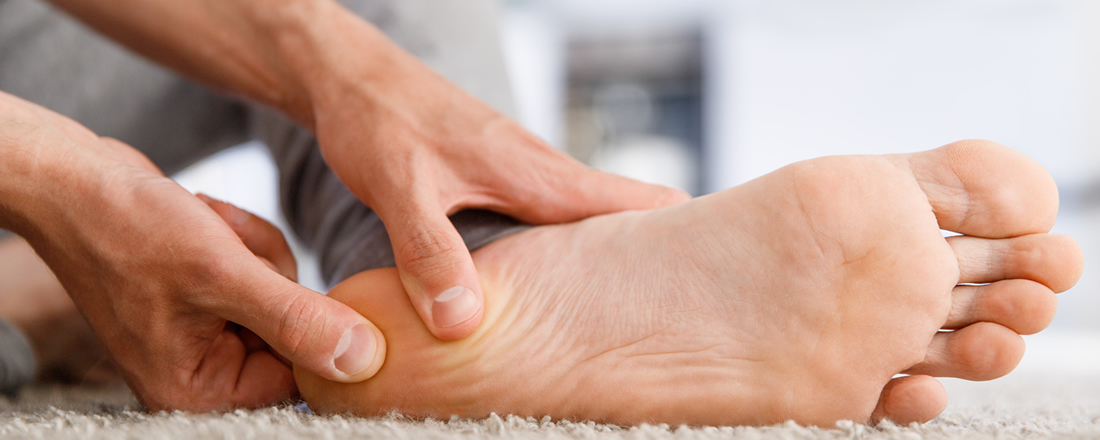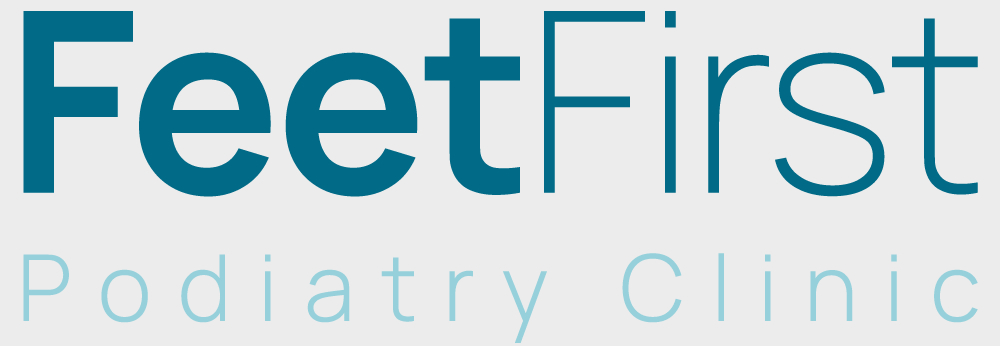
Foot Pain
Common foot pain conditions that would need a musculoskeletal assessment would include: –
Heel pain (plantar fasciitis)
Forefoot pain (including morton’s neuroma – an enlarged and irritated nerve commonly found between the 3rd and 4th webspace)
Bursitis
Bunions (if painful or needing some prevention intervention)
Painful toes or troublesome toe deformities such as hammer toes or clawed toes.
Achilles tendon pain (tendonopathy)
Painful tendons in other places on the feet
Osteoarthritis
Joint pain – ankle, shin, knee and hip
Heel Pain (Plantar Fasciitis)
What is plantar fasciitis?
Plantar fasciitis means inflammation of your plantar fascia. Your plantar fascia is a strong band of tissue (like a ligament) that stretches from your heel to your toes. It supports the arch of your foot and acts as a shock-absorber in your foot.
What are the symptoms?
Symptoms typically involve heel pain which has come on gradually over weeks. It is usually worse first thing in the morning and after getting up from sitting. It will usually improve on weightbearing initially but worsen during the day if on your feet a lot.
What causes plantar fasciitis?
Repeated small injuries often caused by a stretched plantar fascia (with or without inflammation) are thought to be the cause of plantar fasciitis. The injury is usually near to where the plantar fascia attaches to your heel bone. You are more likely to injure your plantar fascia in certain situations.
For example:
If you are on your feet for a lot of the time e.g. walking, standing, running
If you have recently started exercising on a different surface
If you have been wearing shoes with poor cushioning
If you are overweight – this will put extra strain on your heel
If there is an overuse or stretching of your sole e.g. athletes who increase running intensity or distances
If you have a tight Achilles tendon. This can affect your ability to flex your ankle.
How common is plantar fasciitis?
Plantar fasciitis is very common. Around 1 in 10 people will get plantar fasciitis at some time in their life
What are the symptoms of plantar fasciitis? Pain is the main symptom. This can be anywhere on the underside of the heel. However commonly, one spot is found as the main source of pain. This is often about 4cm forward from your heel and may be tender to touch.
The pain is often worse when you take your first steps on getting up in the morning, or after long periods of rest where no weight is placed on your foot.
How is plantar fasciitis diagnosed?
Your podiatrist can usually diagnose plantar fasciitis by examining your foot and talking to you.
It is important to note that there are other causes of heel pain and if your heel pain is not settling, it is important to get a definitive diagnosis to rule out other causes. This could include an MRI, ultrasound scan or X-ray.
What is the initial treatment for plantar fasciitis?
Initial treatments usually involve rest, orthoses (insoles), exercises, massage, icing and anti-inflammatory drugs such as ibuprofen. Click here to learn more about orthoses therapy.
If these methods do not help then other treatments are suggested such as Extracorporeal shockwave therapy (ESWT) or steroid injections.
Achilles Tendonopathy
What is Achilles tendonopathy?
Achilles tendonopathy (tendonosis) is a common condition that affects the tendon that connects your calf muscles to the heel bone (calcaneus). It is the strongest tendon in the body and has to take a lot of stress as it carries our full weight.
What are the types of Achilles tendonopathy?
Classic features are pain and swelling of the Achilles tendon either at the insertion into the heel bone (insertional achilles tendonopathy) or at the midpoint between the heel insertion and the muscle insertion (mid-portion achillies tendonopathy) and general diffuse ache along the entirety of the achilles tendon (para tendon achilles tendonopathy.
What are the symptoms of Achilles tendonopathy?
Heel pain and swelling at the back of the heel
Thickening of the tendon
Limited range of motion when flexing the foot
Area around the heel may feel warm to touch
Tenderness in the affected area
Morning stiffness which is often worse on days after exercise. The pain/stiffness will typically “warm-up” during the first 5-10 minutes of activity. This feature often stops people seeking help as they initially run through the pain.
What causes Achilles tendonopathy?
Excessive loading of the tendon during vigorous activities is regarded as the main cause
- Being overweight leaves you more at risk of an Achilles tendonopathy
- Long periods on your feet results in prolonged loading of the tendon
- Tightness and/or weakness in the calf muscles
- Diabetes: People with Diabetes can be at an increased risk of developing Achilles tendonopathy
- Poor lower limb alignment due to weak pelvic muscles and leg muscles. Stiff joints in the foot. Footwear with poor cushioning/support
- Running further than you are used to
- Running at a higher intensity than you are used to
- Old or poor quality footwear
How common is it?
The condition is more commonly found after the age of 30. It is more common in men.
How is it diagnosed?
Your podiatrist can usually diagnose Achilles tendonopathy by examining your tendon and talking to you.
What is the initial treatment for achilles tendonopathy?
Initial treatments usually involve rest or exercise modification, orthoses (insoles), exercises, massage, icing and footwear modification.
If these methods do not help then we may suggest Extracorporeal Shockwave Treatment (ESWT). ESWT is a technology that uses acoustic waves to treat chronic pain conditions of the musculosketal system. An intense but short soundwave is passed through the skin at the injured area and works by stimulating certain components within the body including blood flow which accelerates the healing process.
Bursitis
Bursitis – A bursa is a fluid-filled sac that functions as a gliding surface to reduce friction between tissues of the body. Overuse can cause these to become painful and swell. Typically, in the foot, they can occur at the back of the heel (retrocalcaneal bursitis), over any of the 5 metatarsal heads, at the ankle joint
Bursitis in the feet can be caused by trauma or by repetitive use, or it may be associated with another condition, such as gout or arthritis. In many cases, bursitis can be treated with home remedies such as ice packs, rest, and anti-inflammatory medications.
In some cases, especially when bursitis becomes chronic, treatment may include physical therapy or cortisone injections into the bursa. A bursa that has become infected will require treatment with antibiotics.
Bursae can be found in many areas on the foot. A few examples:-
At the insertion of the Achilles into the heel bone (retrocalcaneal bursitis).
Under the big toe joint which can occur together with sesamoiditis (often occurs in runners or tennis players who experience high impact on the forefoot).
Between the bones on the midfoot ankle joint.


